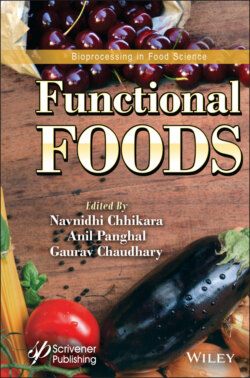Читать книгу Functional Foods - Группа авторов - Страница 43
3.2.5 Flaxseed
ОглавлениеFlaxseed comes from Linum usitatissimum L., which is commonly called the flax plant and belongs to the family Linaceae [153–155]. It is also called linseed [156, 157], and it is native to Western Asia and Mediterranean areas [153–155]. Today, however, it is grown in over 50 countries, mainly in areas of the northern hemisphere. Canada produces and exports the largest quantity of flaxseed in the world [153, 158], and India, the United States, China, and Ethiopia are the other major countries that grow flax plant for its seeds [158–161]. In the world, India ranks first in terms of flaxseed cultivation area and third in terms of flaxseed production [158, 160, 161]. The first known evidence of flax cultivation is the use of the flax plant in the manufacture of linen fabric in eastern Turkey in 6000 BC [162, 163]. Flaxseed is used from past to present to obtain linseed oil for industrial purposes such as linoleum, paint, varnish, cosmetics, and ink production [157, 164, 165]. While flax fiber is valuable in producing high-quality linen clothing, milled or ground flaxseed is commonly used as a component of fertilizers and in foodstuffs for animals [162, 163]. Flaxseed is also of value in functional foods because it has several beneficial pharmaceutical and nutritional properties [157, 166].
The seeds of flax plants are oval-shaped and flat; their tips are pointed. They range in color from dark shades to yellow [160, 162]. Seeds are about 3.0–6.4 mm long, 1.8–3.4 mm wide, and 0.5–1.6 mm thick [155, 162]. Embryos account for 55% of hand-cut flaxseed’s overall weight, while the seed coat and endosperm represent 36% of overall weight. Finally, the embryo axis accounts for 4% [160, 162]. Oily flaxseeds are generally larger than fibrous flaxseeds [155, 167]. Flaxseeds possess a chewy, crisp texture and they have a pleasing nutty flavor [155, 168].
The chemical composition of flaxseed depends upon the environmental conditions in which the flax is grown and differs significantly among varieties [169]. The Canadian Grain Commission reported that one variety of Canadian flaxseed had a composition including 41% fat, 20% protein, 28% total dietary fiber, 7.7% moisture, and 3.4% ash [170]. Minor components in flaxseed are vitamins (A, B, D, E) and minerals (cadmium, selenium, etc.), cyanogenic glycosides, trypsin inhibitor, phytic acid, lignans, lina-tine, polyphenols, and cyclolinopeptides (CLs) [162, 170, 171]. Flaxseed includes 8–10 g/kg total polyphenols, about 5 g/kg esterified polyphenols, and 3–5 g/kg etherified polyphenols [172]. It constitutes the richest available resource for obtaining n-3 fatty acid, also known as alpha-linolenic acid. This particular acid accounts for roughly 55% of the total fatty acids that are present in the seeds of this plant [157, 163]. Alpha-linolenic acid may be metabolized by certain types of enzymes in the human intestine to docosahexaenoic acid and eicosapentaenoic acid [157, 173]. It was established that increasing the intake of long-chain polyunsaturated fatty acids in one’s diet, and particularly one’s intake of docosahexaenoic and eicosapentaenoic acids, can reduce disease risks [157, 174].
Studies report that flaxseed has a unique potential in preventing diseases including cardiovascular diseases, rheumatoid arthritis, osteoporosis, constipation, and various cancers (colon, breast, prostate cancers) and that it has positive effects on the immune system. Although the seeds of flax plants contain cyanogenic glycosides, linatine, and phytic acid, which negatively affect nutritional absorption, researchers have shown that no apparent negative results are experienced from the daily intake of 50 g of flaxseed [160].
